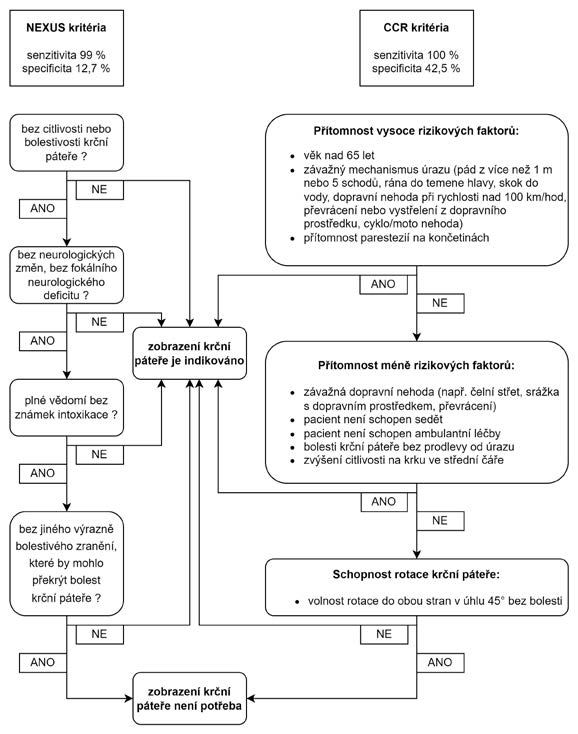Abstract
Introduction: The study identifies risk factors predicting cervical spine fracture on CT based on information in the referral form.
Methods: All patients aged over 18 years with a CT scan of the head and cervical spine completed at the University Hospital Brno in the year 2019 to exclude any fresh trauma were included in the retrospective study. The analyzed potential risk factors included gender, age over 65 years, unconsciousness or impaired consciousness, mechanism of injury, paresthesia or plegia suspected to be associated with trauma, cervical spine pain, other neurological symptomatology, presence of cervical collar, presence of intracranial hemorrhage on head CT, and presence of skull fracture on head CT.
Results: In total, a cervical or upper thoracic spine fracture was described in 51 of 1177 patients (4.3%). Statistically significant risk factors for cervical spine fracture on CT scan were identified as mechanism of injury similar to car accident or jumping into water (OR 2.52; p=0.004), pain of the cervical spine (OR 1.81; p<0.001), paresthesia or plegia probably related to the injury (OR 2.81; p=0.024) and presence of cervical collar at the time of the CT of the cervical spine (OR 7.22; p<0.001). If cervical spine CT had been performed only in the presence of selected risk factors (age over 65 years and/or car accident and water jump and/or presence of unconsciousness and/or cervical spine pain), which were present in 77% of the patients, 50 of 51 fractures would have been captured (sensitivity 98%).
Conclusion: Significant risk factors associated with fracture findings on cervical spine CT can be identified based on the information provided in the referral form.

